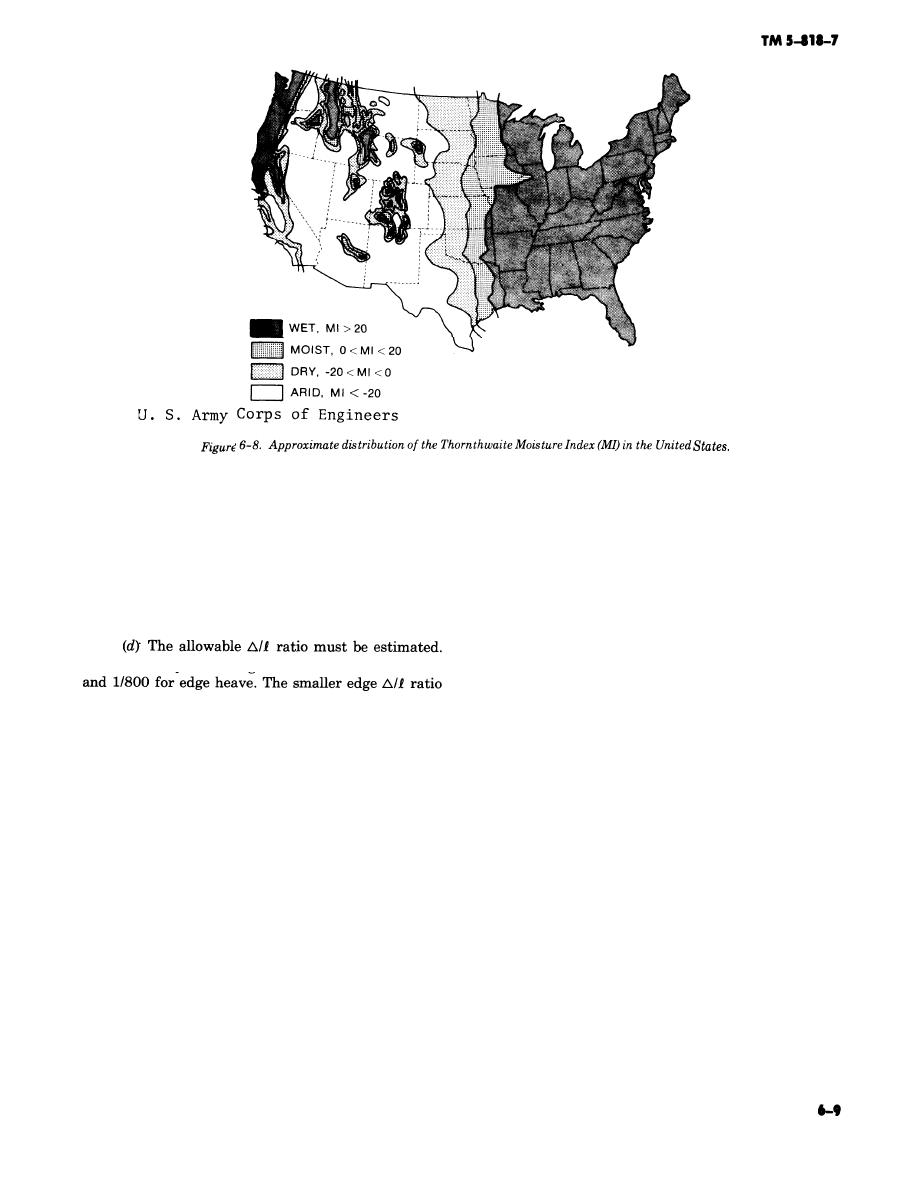
cover is provided over the steel. The depth of the exca-
cedure are the compressive strength of concrete; allow-
vation that the mats are placed in to achieve bearing
able tensile and compressive stresses in concrete; type,
capacity and tolerable settlements eliminates seasonal
grade, and strength of the prestressing steel; grade
edge effects such that the edge lift-off distance is not
and strength of the mild steel reinforcement; and slab
subgrade friction coefficient, The amount of reinforc-
applicable.
(2) Procedure. The thick mat is designed to deter-
ing steel recommended by this procedure should be
considered a minimum. The slab-subgrade coefficient
mine the shear, moment, and deflection behavior
of friction should be 0.75 for concrete cast on poly-
using conventional practice, then modified to accom-
modate swell pressures and differential heave caused
ethylene membranes and 1.00 if cast on-grade.
by swelling soils. The analyses are usually performed
by the structural engineer with input on allowable soil
This ratio may be as large as 1/360 for center heave
bearing pressures, uplift pressures (hydrostatic and
swell pressures from expansive soils) and estimates of
criterion is recommended by the PTI because edge lift
potential edge heave/shrinkage and center heave from
is usually much less than center lift deflections and the
the foundation engineer. Computer programs are com-
stems of the beams resisting the positive bending mo-
monly used to determine the shear, moments, and de-
ment may be unreinforced.
flections of the thick mat.
c. Design of thick mats. The state of the art for esti-
(a) Structural solutions. The structural solution
mating spatial variations in soil pressures on thick
may be initiated with an estimate of the thickness of a
mats is often not adequate. These mats tend to be
spread footing that resists punching shear and
heavily overdesigned because of the uncertainty in the
bending moments for a given column load, concrete
loading and the relatively small extra investment of
compressive strength, and soil bearing capacity. Fol-
some overdesign.
lowing an estimation of the initial thickness, hand
solutions of mat foundations for limited application
(1) Description. Concrete mats for heavy struc-
based on theory of beams on elastic foundations are
tures tend to be 3 feet or more in thickness with a con-
tinuous two-way reinforcement top and bottom. An 8-
available from NAVFAC DM-7. More versatile solu-
foot-thick mat supporting a 52-story structure in
tions are available from computer programs based on
Houston, Texas, contains about 0.5 percent steel,
theory of beams on elastic foundations such as
while the 3-foot-thick mat of the Wilford Hall Hospital
BMCOL 2, which is available at the U.S. Army Corps
complex at Lackland Air Force Base in Texas also con-
of Engineer Waterways Experiment Station, and fi-
tains about 0.5 percent steel. The area of steel is 0.5
nite element analysis.
percent of the total area of the concrete distributed
(b) Foundation soil/structure solutions. The
equally each way both top and bottom. The steel is
BMCOL 2 soil-structure interaction program permits
overlapped near the concentrated loads, and a 3-inch
nonlinear soil behavior. Finite element programs are



 Previous Page
Previous Page
